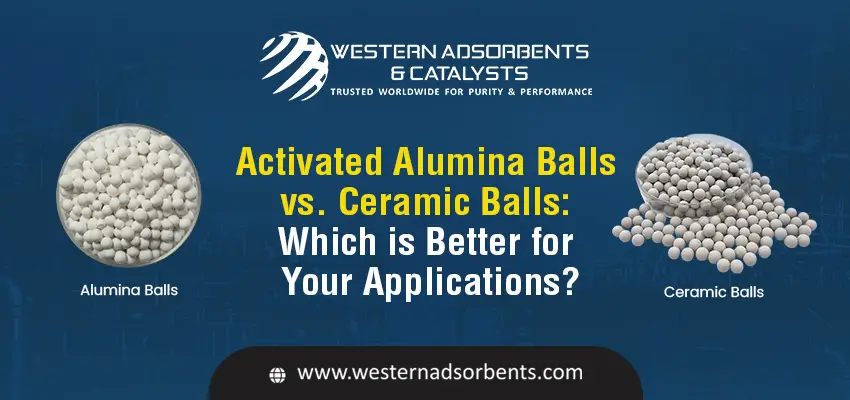Choosing between alumina balls and ceramic balls is a matter of importance. The outcome of the process depends on the balls chosen as well as the source of these balls. How can we make better decisions in choosing between these? By simply understanding their composition, utility, and application.
Understanding Ceramic Balls
A ceramic ball is made up of inert ceramic, typically used in industries for various purposes such as bearings, filtration systems, valves, and many more. They are manufactured by mixing ceramic powder with binding mixtures and making balls, followed by sintering to harden them. Their inertness makes them suitable for a range of applications. So if you are looking to purchase ceramic balls for your application, turn to your most trusted partner, Western Adsorbents & Catalysts. As a leading ceramic ball manufacturer in India, our range of ceramic balls exhibits exceptional industrial-grade qualities to perfectly fit your requirements.
Key Features of a Ceramic Ball
- Hardness
- Lightweight
- Thermal Resistance
- Chemical Stability
- Low friction
Understanding Activated Alumina Ball
Activated alumina balls are small, porous balls made up of aluminum oxide. These balls are used to effectively absorb moisture from air or gas. These balls are made by heating alumina oxide to a high temperature, resulting in a highly porous and large surface area material. They are mainly used for adsorbing moisture and dehydrating gases and liquids.
Key Features of Activated Alumina Ball
- High absorption capacity
- High surface area
- Porous structure
- Chemical stability
- High mechanical strength
- Thermal stability
- Regeneration
Comparison of Ceramic Balls and Activated Alumina Balls
| Parameter | Ceramic Ball | Activated Alumina Ball |
| Material | Inert ceramic compounds | Aluminium oxide (Al₂O₃) |
| Manufacturing Process | Mixed with binders, shaped, and sintered | Heated to high temperatures to create a porous structure |
| Primary Applications | Bearings, filtration systems, valves, and mechanical processes | Moisture removal from air/gases, dehydration of liquids, and desiccant systems |
| Main Function | Mechanical support, thermal and chemical resistance | Adsorption and dehydration |
| Hardness | High | Moderate to high |
| Weight | Lightweight | Relatively lightweight |
| Thermal Resistance | Excellent | Excellent |
| Chemical Stability | High | High |
| Friction | Low friction (ideal for bearings) | Not a primary feature |
| Porosity | Low | High |
| Surface Area | Moderate | Very high (due to porous structure) |
| Absorption Capacity | Not designed for absorption | High moisture and gas absorption |
| Mechanical Strength | Good | High |
| Regeneration Capability | Not applicable | Can be regenerated and reused |
| Best Suited For | Mechanical strength & inert support in high-stress environments | Drying, purification, and adsorption-based processes |
After reading about both the balls and their features, you will be able to decide which is best for you. If you are looking for a material that is robust, stiff, resistant to friction and temperature, then ceramic balls are the best choice. If you are trying to find a solution to your moisturized air and want to filter it using a strong desiccant, then activated alumina balls are your one-stop solution. Good quality alumina balls can effectively filter the air and adsorb all impurities.
Where will you find the top-quality activated alumina balls and ceramic balls? Western Adsorbents & Catalysts is your trusted ceramic ball and activated alumina ball manufacturer in India. We ensure our products provide complete customer satisfaction. With alumina balls, we also provide ceramic balls, anthracite, activated charcoal, garnet, and molecular sieves in all sizes. Call us for more information.
Also Read: Activated Alumina Balls for Nitrogen Generation Plants
